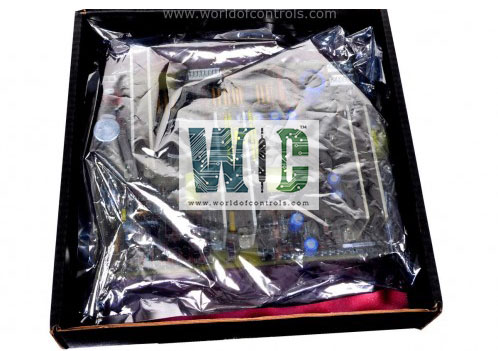
World Of Controls understands the criticality of your requirement and works towards reducing the lead time as much as possible.
DS3800NMSA - Operational Amplifier Board is available in stock which ships the same day.
DS3800NMSA - Operational Amplifier Board comes in UNUSED as well as REBUILT condition.
To avail our best deals for DS3800NMSA - Operational Amplifier Board, contact us and we will get back to you within 24 hours.
SPECIFICATIONS:
Part Number: DS3800NMSA
Manufacturer: General Electric
Series: Mark IV
Product Type: Operational Amplifier Board
System Voltage: 12 to 48 volts
Max. Channel Current: 750 mA
Max. Channel Input Voltage: Battery Voltage
Size: 8.25 cm high x 4.18 cm
Min Operating Voltage: 8 volts
Voltage Input Range: 90 – 264 VAC
Frequency: 47 – 63 Hz Voltage Output Range
Transient Surge Protection: 1500 W
Voltage Accuracy: ± 50 mV
DIN Rail Attachment: 35 mm
Repair: 3-7 days
Availability: In Stock
Weight: 0.2 kg
Country of Origin: United States
FUNCTIONAL DESCRIPTION:
DS3800NMSA is an Operational Amplifier Board manufactured and designed by General Electric as part of the Mark IV Series used in GE Speedtronic Gas Turbine Control Systems. The DS3800NMSA is a signal processing board that uses operational amplifiers (op-amps) to manage and condition analog signals. These signals are often generated by sensors that monitor critical parameters such as temperature, pressure, vibration, and speed in turbine systems. These sensors send out relatively weak signals that need to be amplified and processed to be useful for control systems.
OPERATION & FUNCTIONS OF AN OPERATIONAL AMPLIFIER BOARD:
Signal Amplification: One of the core tasks of an operational amplifier is signal amplification. The board uses op-amps to increase the magnitude of small electrical signals received from the turbine's sensors. These sensors might produce signals that are too weak to be processed by the system’s microprocessor. The operational amplifier boosts these signals to an appropriate level, making them usable for the subsequent processing steps.
Signal Conditioning: The board not only amplifies signals but also conditions them. Signal conditioning can include processes such as filtering noise, scaling the signal to a required range, or converting signals from one form to another (e.g., from analog to digital). In turbine control, these functions ensure that the data used for turbine operations is accurate and reliable.
Feedback Control: Many industrial systems, including turbine controls, use feedback control loops to maintain stable operations. The operational amplifier board helps maintain stability by processing signals in real-time and providing feedback that regulates the turbine’s speed, temperature, pressure, or other variables. This ensures the turbine operates within optimal parameters and can adjust automatically to changes in load or environment.
Signal Isolation: In some designs, operational amplifier boards are used to provide signal isolation, protecting sensitive control system components from voltage spikes or electrical noise that might originate from the turbine’s operational environment. By isolating the control system from these potentially harmful signals, the board helps increase the reliability and longevity of the entire system.
Integration with Control Systems: Once the analog signals have been processed by the operational amplifier board, they are sent to the controller or processor in the turbine control system. These processed signals may be used to trigger certain actions, such as starting or stopping the turbine, adjusting the speed, or activating protective measures if critical thresholds are exceeded.
WOC has the largest stock of Replacement Parts for GE Speedtronic Gas Turbine Control Systems. We can also repair your faulty boards and supply unused and rebuilt boards backed up with a warranty. Our team of experts is available around the clock to support your OEM needs. Our team of experts at WOC is happy to assist you with any of your automation requirements. For pricing and availability on parts and repairs, kindly contact our team by phone or email.
What is an Operational Amplifier Board?
An operational amplifier (op-amp) board is a circuit board that uses operational amplifiers to amplify and condition analog signals. In turbine control systems, it processes signals from various sensors that monitor operational parameters like temperature, pressure, and vibration to ensure the turbine functions within safe and optimal parameters.
What types of signals does the Operational Amplifier Board process?
The board typically processes analog signals generated by sensors that monitor factors such as temperature, pressure, vibration, and speed. These signals are often weak and require amplification and conditioning to be useful to the control system.
What type of operational amplifiers are used in the Operational Amplifier Board?
Operational Amplifier Boards typically use high-gain, high-precision operational amplifiers designed to handle the low-level signals from turbine sensors. These op-amps are carefully selected for their low noise, high input impedance, and high output drive capability to ensure accurate signal processing over a wide range of operating conditions.